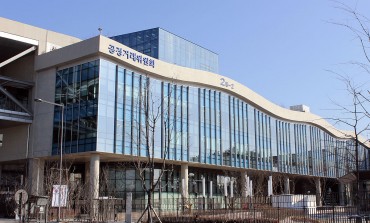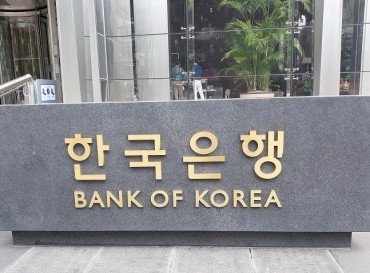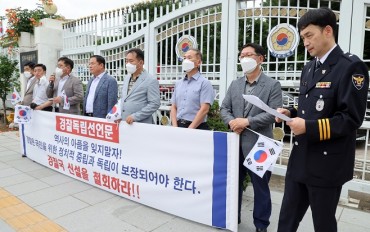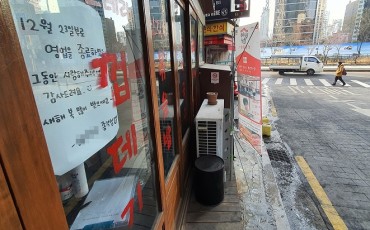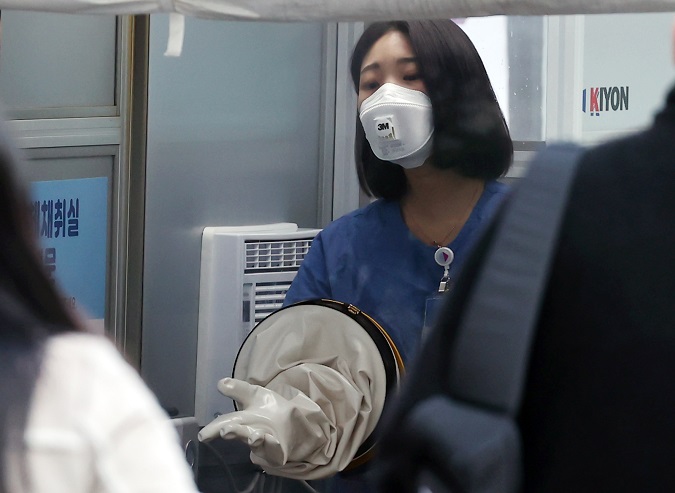
A medical worker gets ready for COVID-19 testing at the National Medical Center on Nov. 23, 2020. (Yonhap)
SEOUL, Nov. 23 (Korea Bizwire) — The number of new coronavirus cases in South Korea fell below 300 for the first time in six days on Monday due to less testing on the weekend, as the greater Seoul area is set to be under tougher virus curbs starting Tuesday to prevent another wave of the pandemic.
The country added 271 more COVID-19 cases, including 255 local infections, raising the total caseload to 31,004, according to the Korea Disease Control and Prevention Agency (KDCA).
The latest figure fell from 330 on Sunday, which was attributable to the fewer number of tests conducted over the weekend.
The daily caseload has stayed in the triple digits since Nov. 8, with the figure hovering over 300 in the last five days.
The recent surge of the virus prompted health authorities to raise the social distancing level by one notch to Level 2, the third-highest in the five-tier system, in the Seoul metropolitan area for two weeks starting Tuesday.
The latest measure comes only days after Seoul raised distancing by one notch to Level 1.5 on Thursday to urge people and business owners to take extra precautions.
Health authorities said the tougher antivirus actions are meant to stop another wave of the pandemic, which could overwhelm the nation’s health care system.
“The third wave of the pandemic is under way due to the silent spread of the virus in our daily lives, leading to over 2,000 additional cases in a week,” Second Vice Health Minister Kang Do-tae said in a meeting with senior health officials.
“If we fail to break the chain of infections, antivirus measures and medical efforts would not be sustainable.”
Unlike the previous outbreaks in the southeastern city of Daegu in February and Seoul in August, the latest outbreaks are harder to trace because they have occurred in small gatherings of family and friends, where people take off their masks.
“The pre-emptive antivirus measures are inevitable to prevent the next wave of the pandemic, which could put a serious strain on daily lives and the economy,” he said.
The daily average of new cases stood at 255.6 over the past week, sharply up from 133.2 a week earlier, the KDCA said.
Among the transmission routes, domestic cluster infections accounted for the largest at 33.8 percent, contact with patients came next with 30 percent, and 13.4 percent were imported from abroad.
“Contact between people increased through travels, events and gatherings after the social distancing regulations eased in October, while infected patients with no symptoms or mild symptoms have been piling up,” KDCA Director Jeong Eun-kyeong said in a briefing.
“Community infections are continuing in the winter season, raising the risks of a nationwide pandemic.”
Those in their 20s infected with COVID-19 rose at the fastest clip among all age groups last week, taking up 17.8 percent of the new cases and prompting authorities to tighten antivirus regulations and monitoring in schools, private academies and study cafes.
Health authorities advised those in their 20s and 30s to refrain from informal gatherings and other activities, as they tend to have no symptoms or mild symptoms in the first three or four days of infection, raising risks of exposure to other people.
The KDCA earlier said the nation’s reproduction rate for COVID-19 has already topped 1.5, meaning that one patient infects more than 1.5 people.
Authorities warned that the country could see more than 600 virus cases daily in early December unless the current pace is curbed.

Cars line up in front of drive-through screening stations for COVID-19 testing in Gyeonggi Provincial Medical Center in Suwon, south of Seoul, on Nov. 23, 2020. (Yonhap)
Under the Level 2 scheme, gatherings involving 100 or more people are banned, while some virus-prone facilities, including nightclubs, need to suspend their business.
Restaurants are allowed to serve food until 9 p.m., with only takeout and delivery services available afterward.
North and South Jeolla Provinces will be under the Level 1.5 distancing starting Tuesday, while other small cities and counties across the nation have enforced tougher distancing rules in accordance with the recent rise in new cases.
Health authorities warned a third wave of pandemic is under way due to cluster infections from private gatherings, public facilities and hospitals, calling for stronger action before a nationwide college exam in early December.
Of the 255 locally transmitted cases, 206 were identified in the capital area, home to nearly half of the nation’s population.
Seoul added 109 more cases, while the surrounding Gyeonggi Province and western port city of Incheon reported 74 and 23 cases, respectively.
The capital region registered over 200 virus cases for the fourth straight day.
An additional 12 patients tested positive from gatherings of family and friends in Incheon, raising the total to 57. Five new cases were linked to a cram school in Seoul, raising the total to 81.
Most major cities and municipalities have reported new infections.
Gangwon Province registered 11 new cases, followed by North Jeolla Province with nine, South Chungcheong Province with eight and South Jeolla Province with five.
The military reported 33 new cases of the coronavirus, the highest daily total among service members, due to cluster infections at an Army unit in Cheorwon, Gangwon Province, raising the total to 37.
Among about 60,000 people who took a state-run teacher employment examination across the country Saturday, one has tested positive for the coronavirus, with no additional cases being discovered so far, according to the KDCA.
Authorities said they have been monitoring the patient’s routes on the test day to trace people who closely contacted the person and place them under monitoring.
The number of new imported cases came to 16, down from 28 the previous day. Russia and Poland each accounted for three cases, and the United States and Indonesia each registered two more cases.
The country reported four additional deaths from COVID-19, raising the total to 509. The fatality rate was 1.64 percent.
The number of seriously or critically ill COVID-19 patients came to 79.
The total number of people released from quarantine after making full recoveries stood at 26,539, up 73 from the previous day.
(Yonhap)



